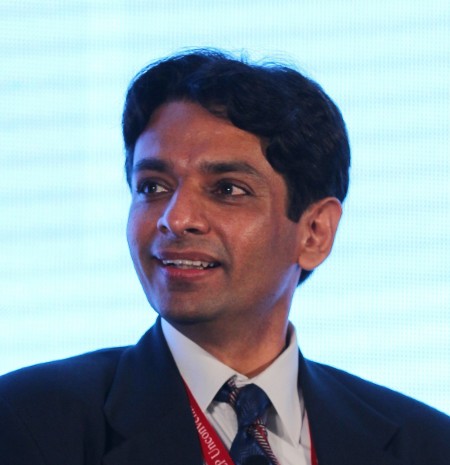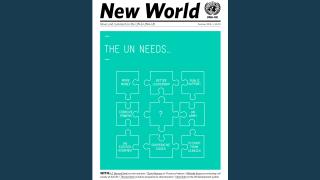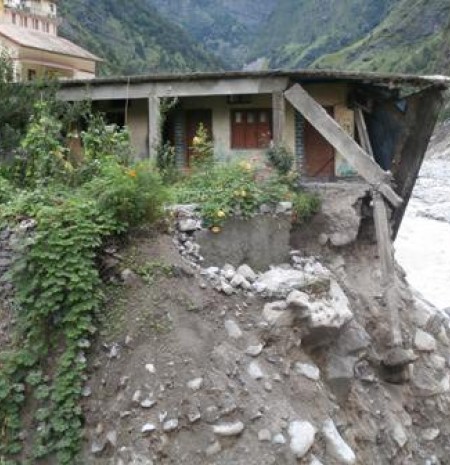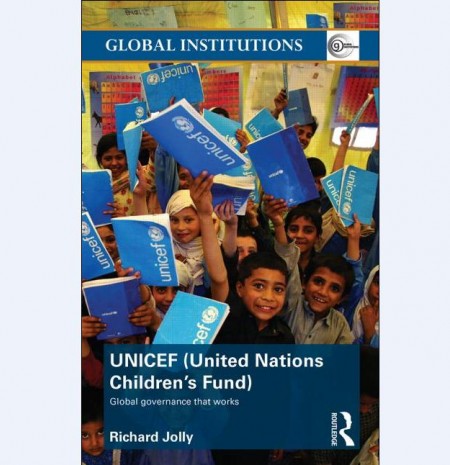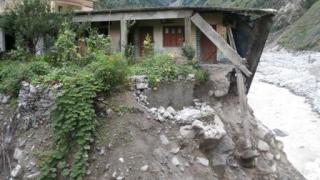
A year ago unprecedented torrential rain triggered a series of natural disasters in the Indian Himalayan state of Uttarakhand, producing glacial lake outbursts, landslides and flash floods in multiple locations over an area the size of Iceland. Over two million people were affected by the disaster - the official death toll was 5,000 but nearly a year later, many more thousands remain missing.
With field staff in Chamoli, Uttarkashi, Rudraprayag and Pithoragarh, some of the worst affected districts, Pragya was one of the first NGOs to respond to the disaster, providing humanitarian support as soon as the worst of the rainfall had abated. We conducted daily needs assessments as the situation unfolded rapidly and unpredictably, and disseminated information via a dedicated section of our website. Some of this information was used to inform the coordination efforts of the UN Disaster Management Team, NGOs and the Inter-Agency Group, ensuring that remote communities’ needs were represented in the emergency operations.
Over the course of the following weeks and months leading up to winter, staff in our UK and India offices directed all our resources into raising funds for relief operations. Pragya was one of 300+ NGOs which eventually contributed to these efforts, and is one of the few organisations continuing to work in the region. Our field staff are currently engaged in post-flood rehabilitation and reconstruction work, focussing on the needs of the most isolated communities.
What went wrong?
Over the past year Pragya engaged with many observers and relief workers involved in the 2013 floods, reflecting on pre-flood preparedness and the effectiveness of the post-flood response. Pragya identified key deficiencies in the pre- and post-flood response which exacerbated the region’s vulnerability and risk to the event: inadequate early warning monitoring systems (state monitoring agencies failed to coordinate and share the data gathered to warn local people), lack of state-level disaster management plans (Uttarakhand does not have a state disaster management plan) and inappropriate intensive tourism and development activities.
Given the scale and nature of the floods, immediate post-flood coordination was weak – severe relief material shortages in some districts contrasted with gross wastage in others. There was a consensus that state and non-state authorities failed to adequately coordinate relief operations. In the first two weeks there was considerable confusion regarding the scale of the tragedy, with irregular updates and no single source of information as events unfolded. Coordination efforts improved with the arrival of the UN Disaster Management Team 75 days after the event, however there is a danger that the withdrawal of this team later th teams th is year will detrimentally affect the momentum of the post-disaster rehabilitation work.
A year on and despite state promises to rehabilitate affected communities, many victims whose homes have been swept away or damaged remain without access to permanent shelter. Assessments that precede the allocation of land for the construction of new homes have yet to be carried out by the government. Challenges of this kind are indicative of the wider issues associated with disaster relief and rehabilitation work in the Himalayas.
The way ahead
Recognising the growing disaster risk and increasing frequency of extreme weather events in the high Himalayas, Pragya has attempted to chart the way ahead for improving disaster risk management in the Himalayan region. Our ‘Seven Strategies for Disaster Management’ includes: i) proactive measures to increase environmental resilience to extreme weather events; ii) vulnerability assessments and preparedness measures; iii) efficient ‘combination disaster’ monitoring and early warning thresholds; iv) community-based disaster management; v) ‘Local Responder Networks’ for quick and effective responses; vi) creating strong coordination mechanisms and vii) communication and transportation technologies specifically for last-mile communities.
The Himalayas are an enormously valuable natural, cultural and financial resource not just for India but indeed, for the entire planet. We hope that in this new political era, state and non-state bodies will prioritise the need to better understand and protect this ecologically fragile landscape. Clear guidance and better resources are needed to implement disaster risk reduction measures to avoid future humanitarian crises on this scale, precisely what the UN’s Economic and Social Commission for Asia and the Pacific recommended just one month before the floods.
Vaidehee Sachdev is Development Officer at Pragya UK and Sejuti Basu is a member of the Research and Advocacy team at Pragya India.
Photo: a damaged home hangs precariously over a surging river in Pithoragarh district, India. © Pragya India.









